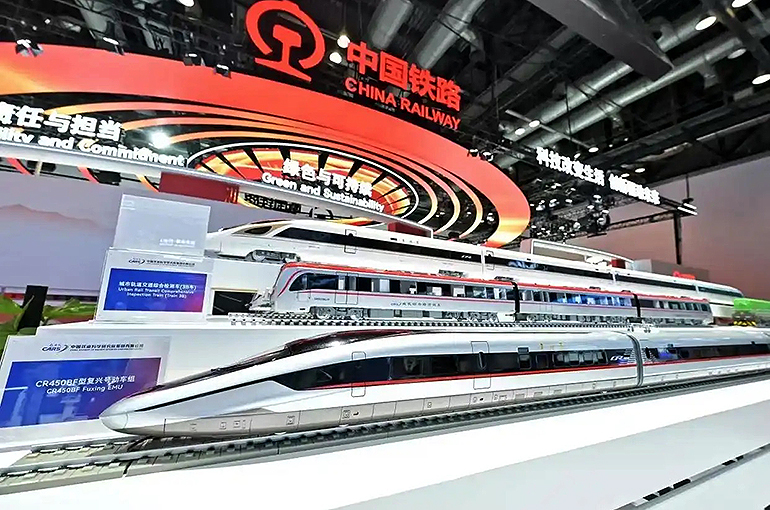 China to Launch 400 Km/h High‑Speed Rail Services in the Future, Debuts New Maglev Prototype
China to Launch 400 Km/h High‑Speed Rail Services in the Future, Debuts New Maglev Prototype(Yicai) July 14 -- China showcased its next‑generation CR450 high‑speed train, which can run at speeds of up to 400 kilometers per hour, and a 600 km/h magnetic levitation prototype at a recent industry expo, where Wang Lixin, vice general manager of the country’s rail operator, announced that the new CR450 will enter commercial service in the future.
China State Railway Group unveiled the CR450AF/BF Fuxing alongside the new superconducting electromagnetic maglev prototype at the 17th China International Modern Railway Technology and Equipment Exhibition, which was held in Beijing from July 8 to 10.
With an eight-car configuration, the CR450AF/BF Fuxing has a maximum operating speed of 400 km/h, Wang said. Compared with the newest high-speed trains in service, it reduces aerodynamic drag by 22 percent, improves traction efficiency by 4 percent, cuts overall weight by 10 percent, and lowers energy consumption by 20 percent. He did not give a timeframe for its introduction.
China already operates the world’s fastest high-speed rail network, running at 350 km/h across nearly 8,100 km of track, according to data released at the World High‑Speed Rail Congress in Beijing.
Wang noted that the Fuxing series, which is designed to handle diverse operating conditions, holds the world record for commercial operation at 350 km/h, achieved across 17 high‑speed lines covering nearly 8,100 km.
China’s high-speed rail network was 48,000 km long at the end of last year, accounting for more than 70 percent of the global total and serving over 97 percent of the country’s cities with populations of at least 500,000 each. It is expected to exceed 50,000 km, covering 97.2 percent of cities, by the end of this year, and 70,000 km by 2035.
Wang noted that after years of innovation, China has developed an end‑to‑end high‑speed rail ecosystem, covering rolling stock, infrastructure construction, train control, traction power, operations management, and safety systems.
The country has also strengthened cooperation with other countries on high-speed rail, Wang added. For example, if Indonesia used Chinese technologies on the link between Jakarta and Bandung, it could cut the travel time to 46 minutes from three hours.
The railroad connecting Belgrade in Serbia and Budapest in Hungary, which was built in cooperation with Chinese companies through the Belt and Road Initiative, has transported about 11 million passengers since it went into service over three years ago, greatly facilitating travel along its route.
Editor: Futura Costaglione